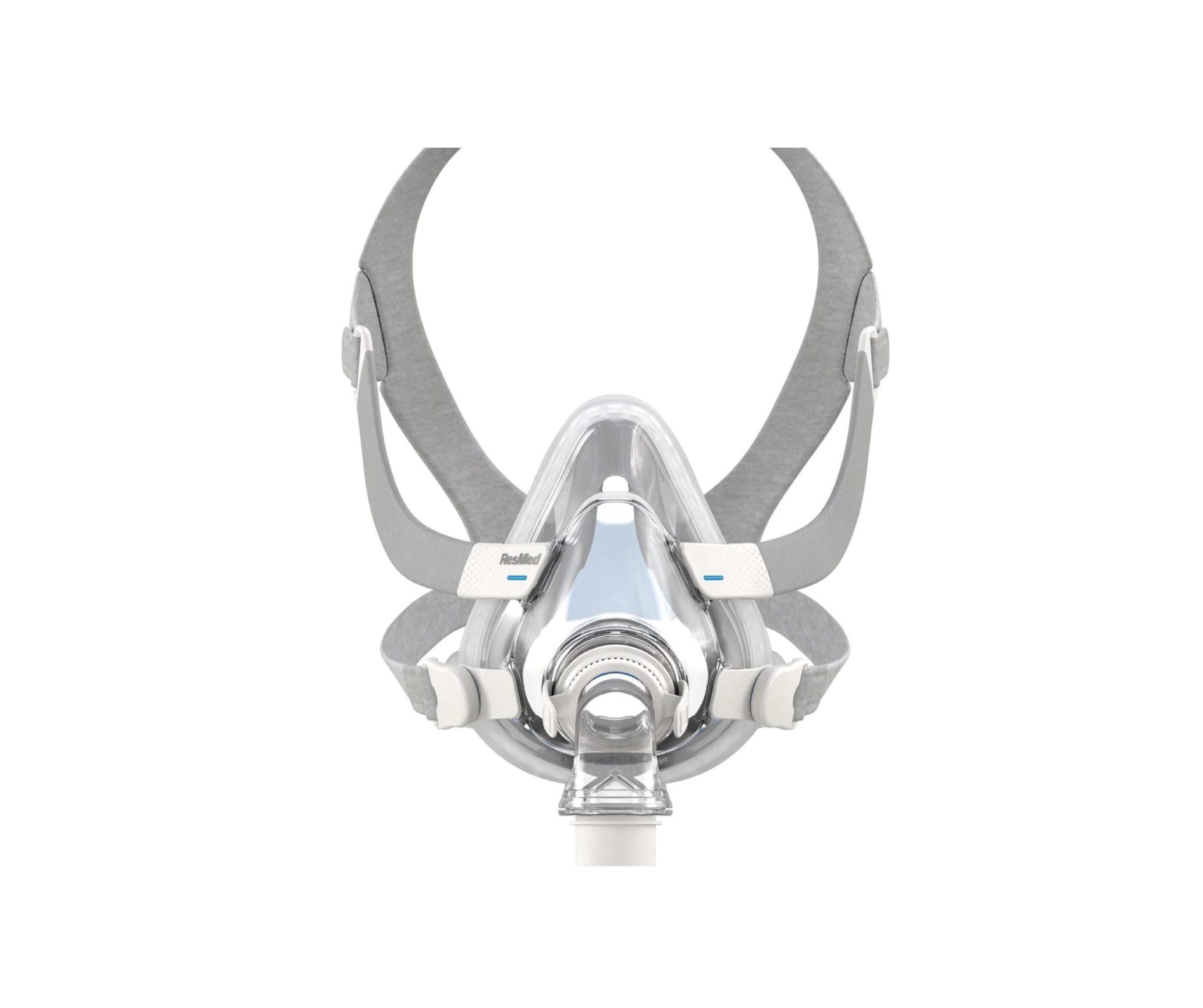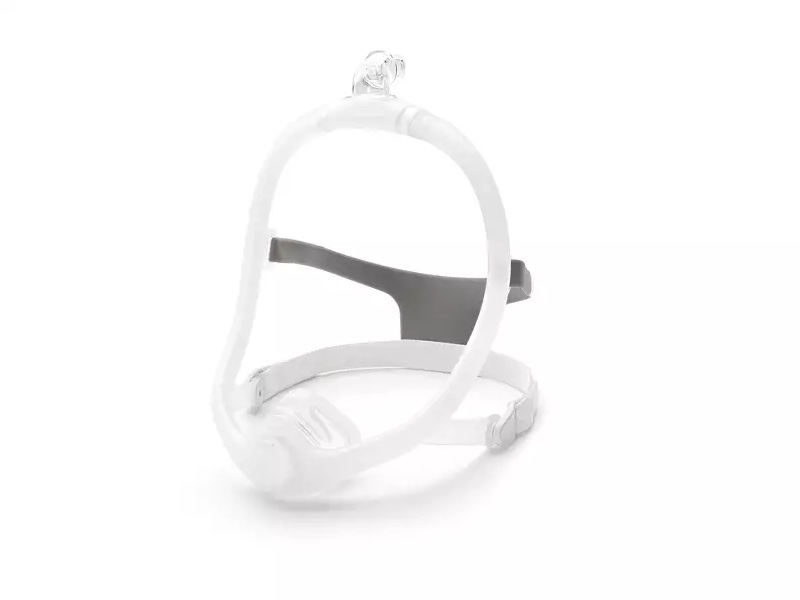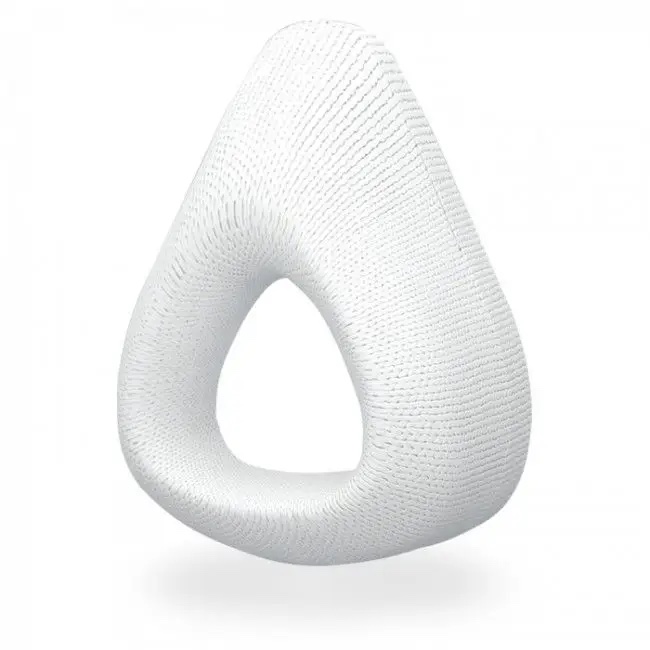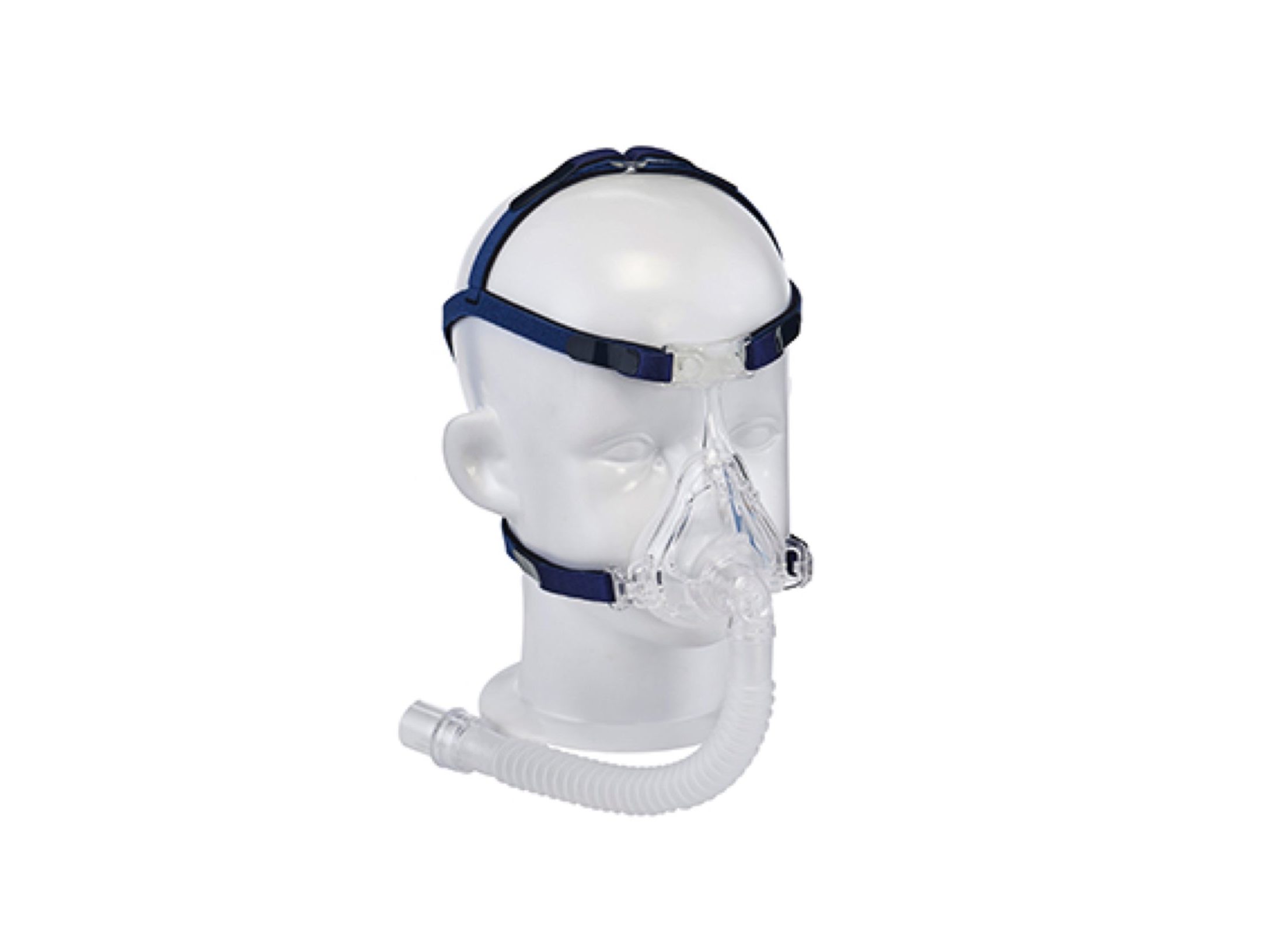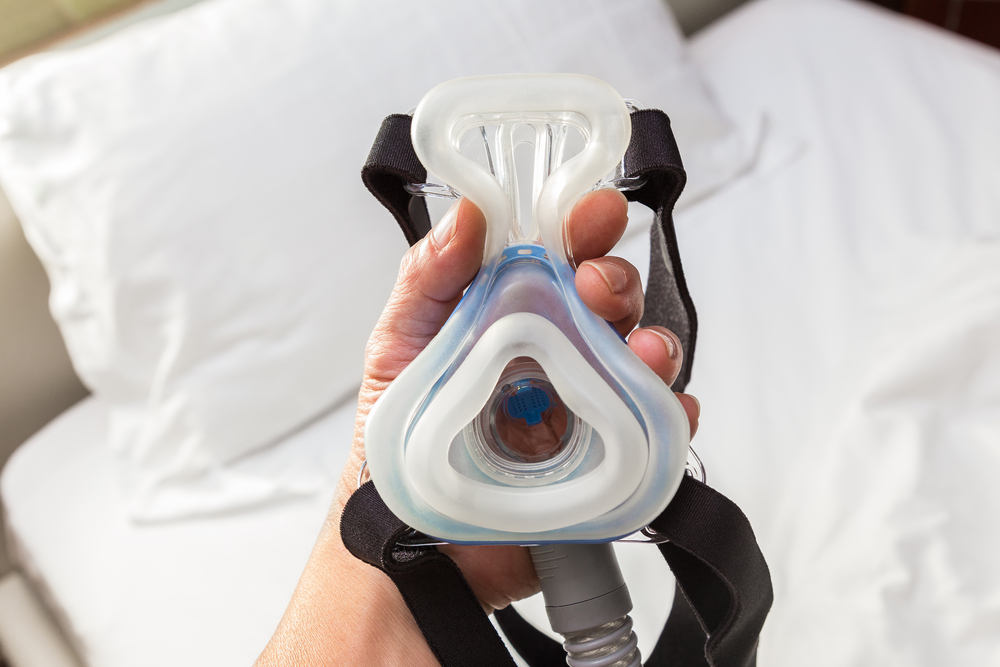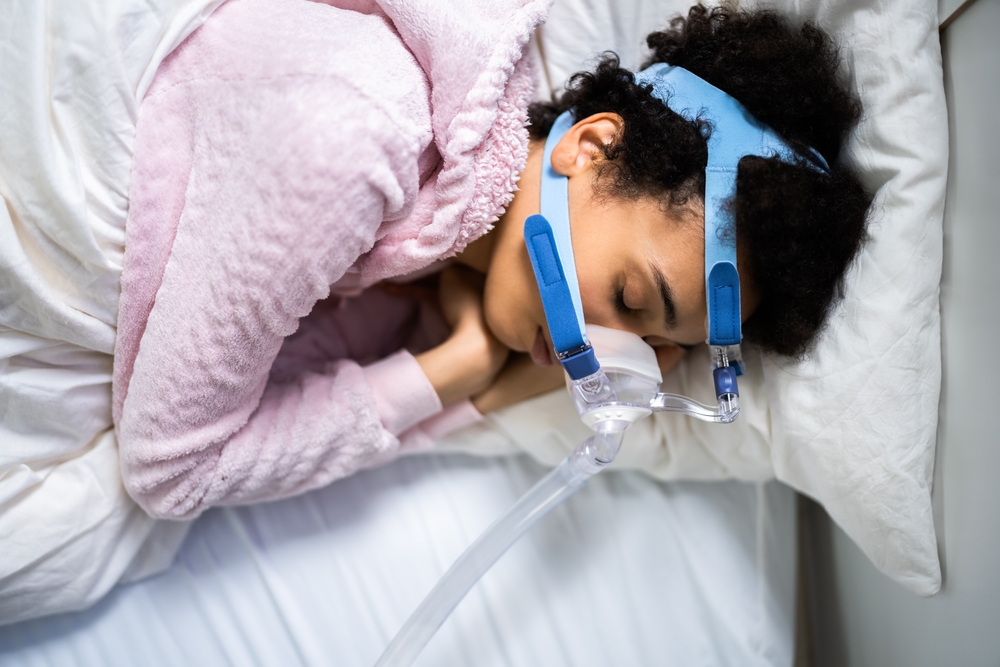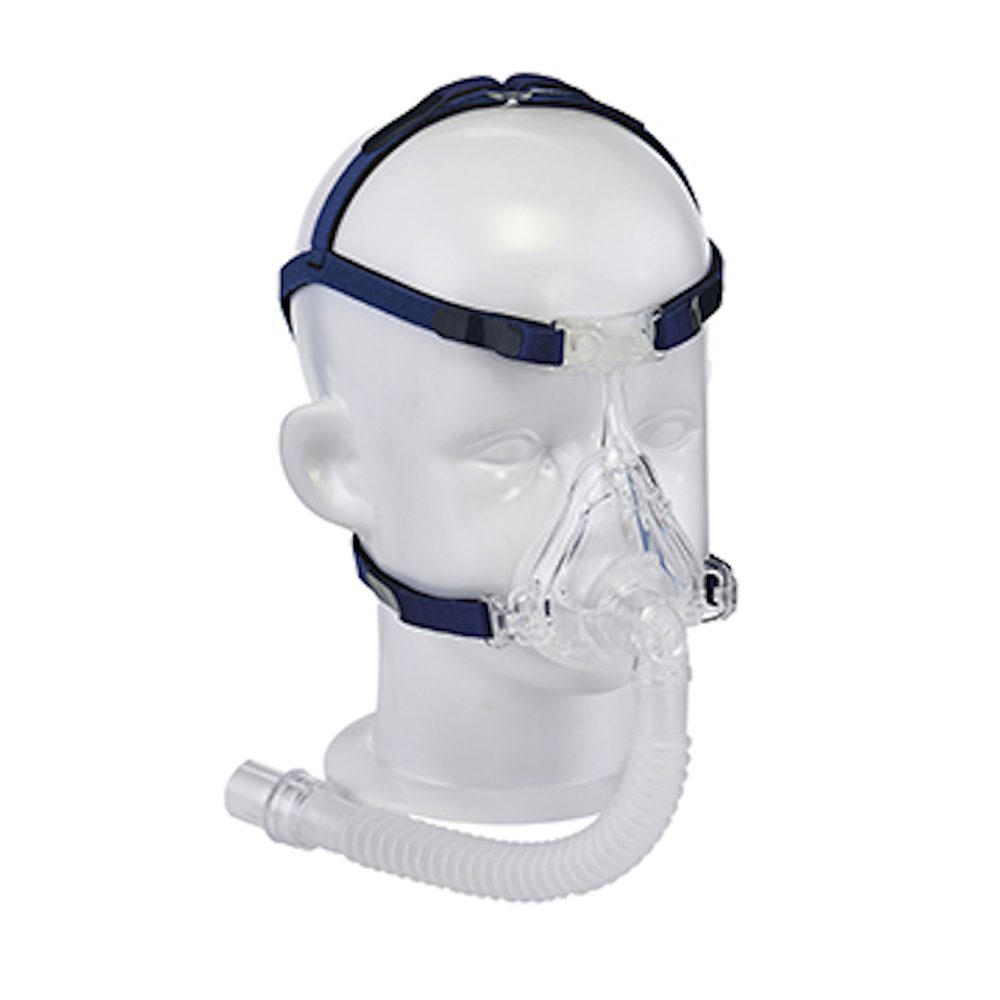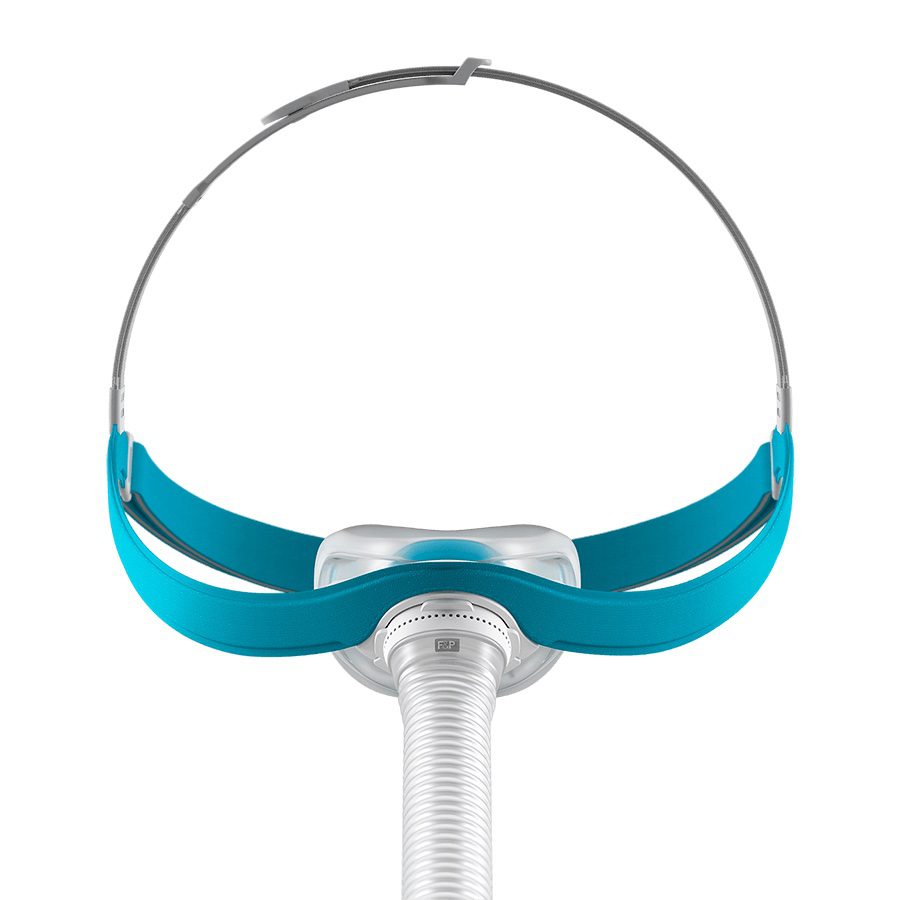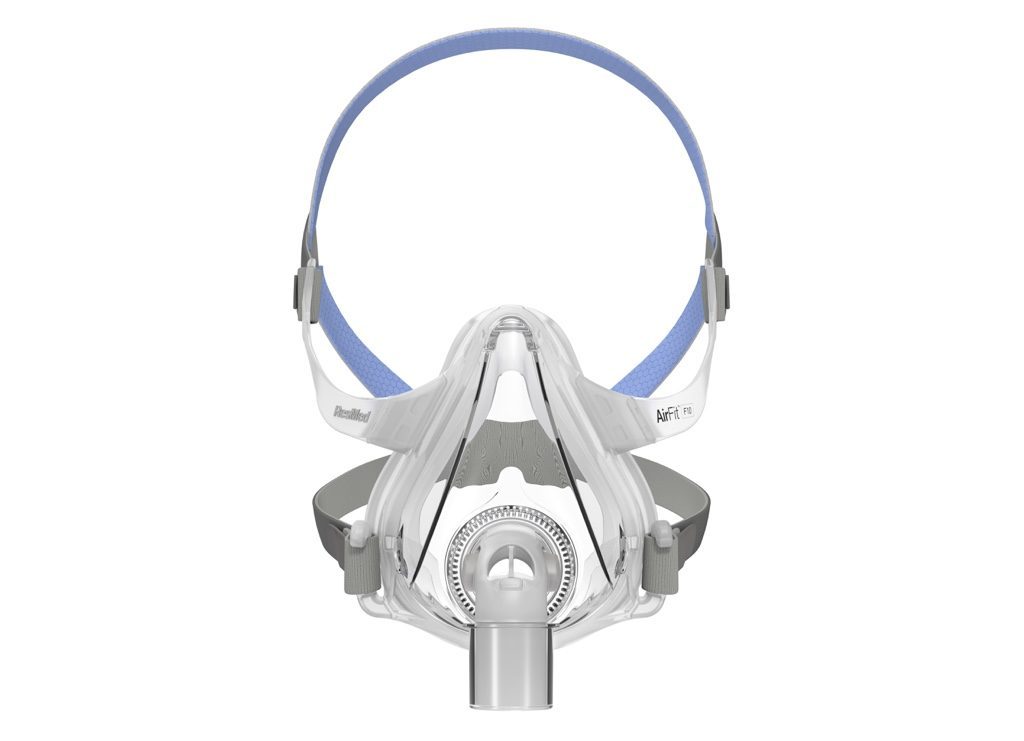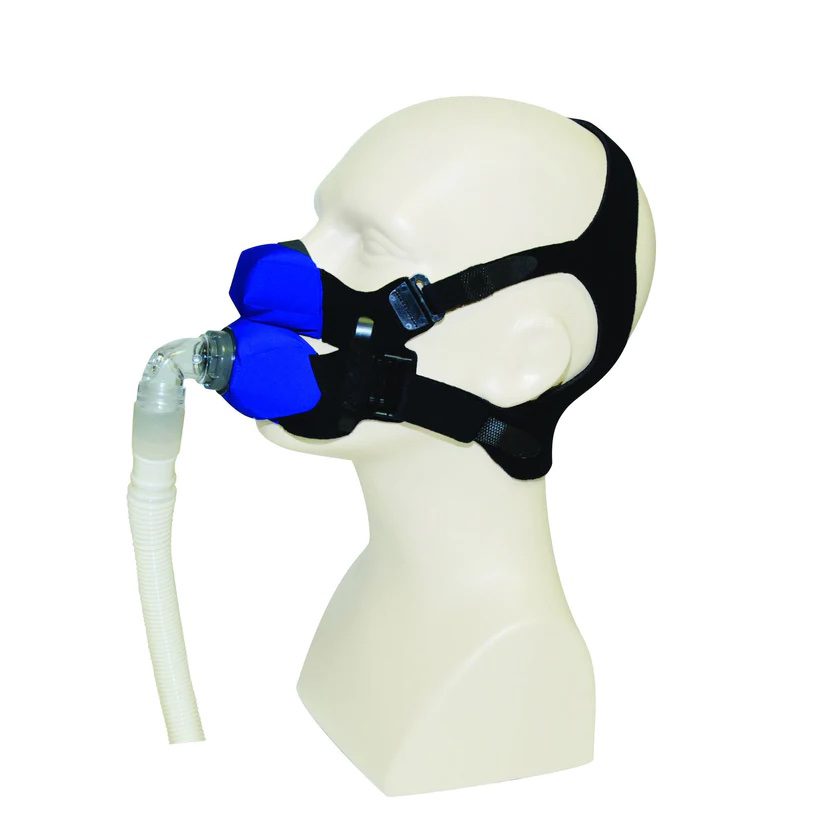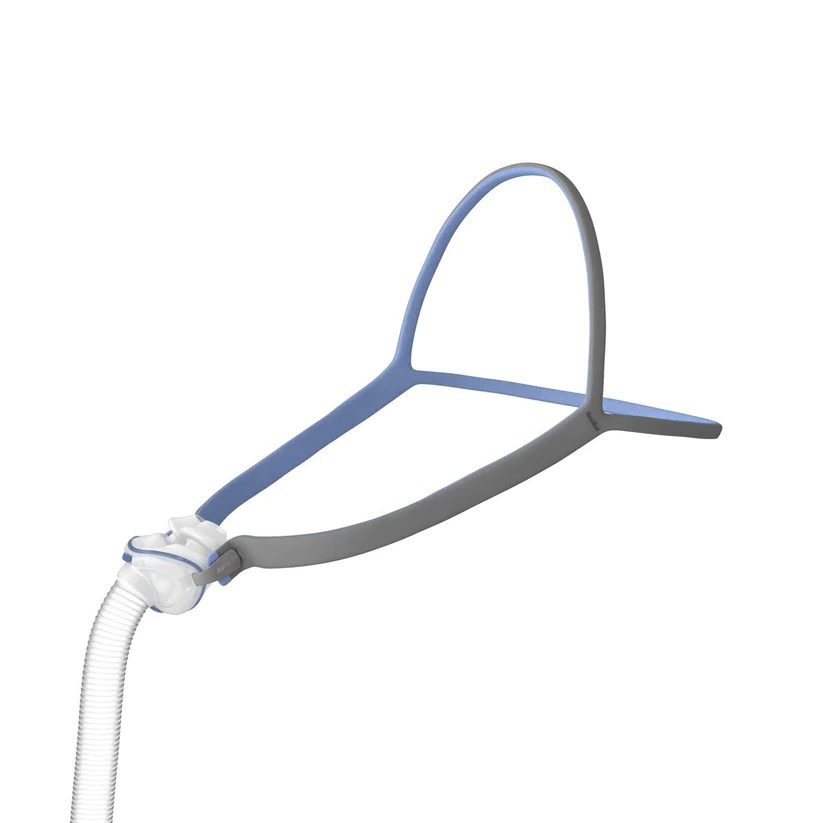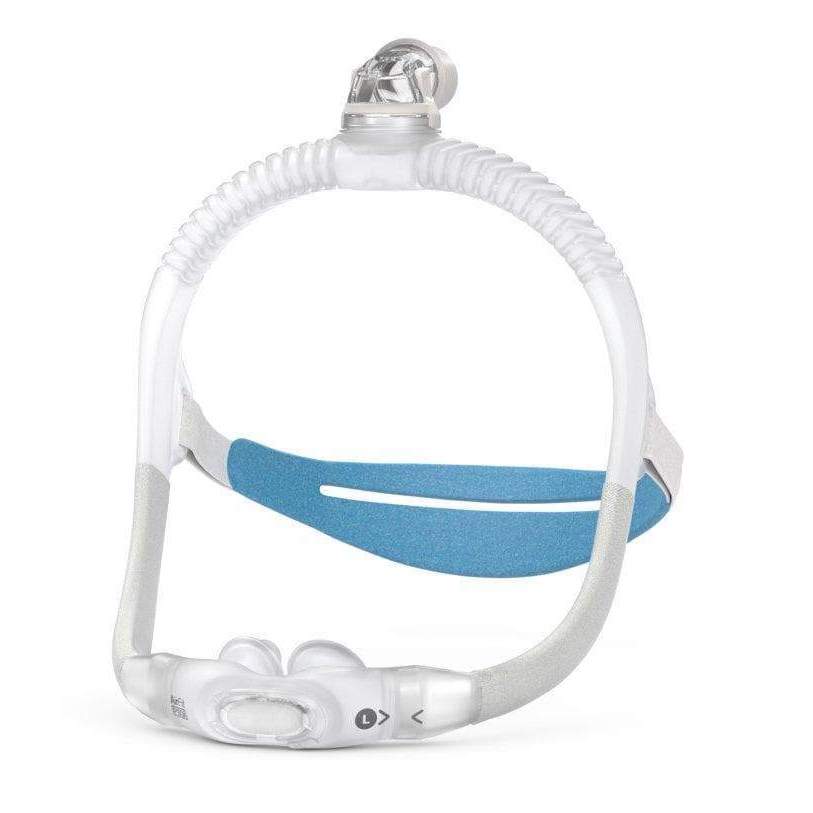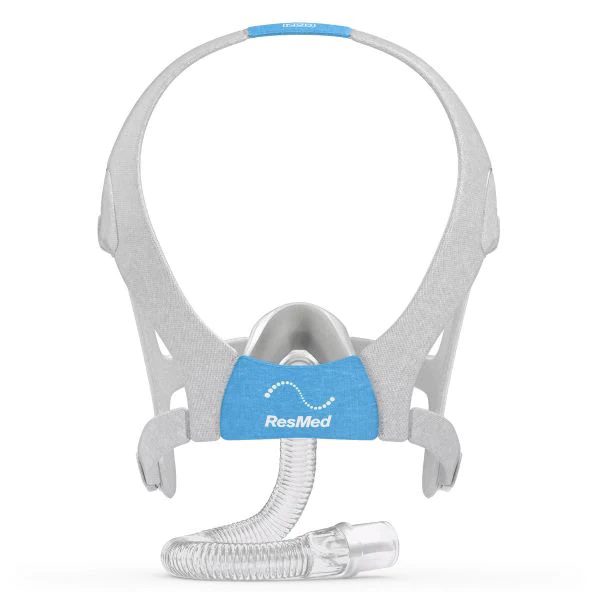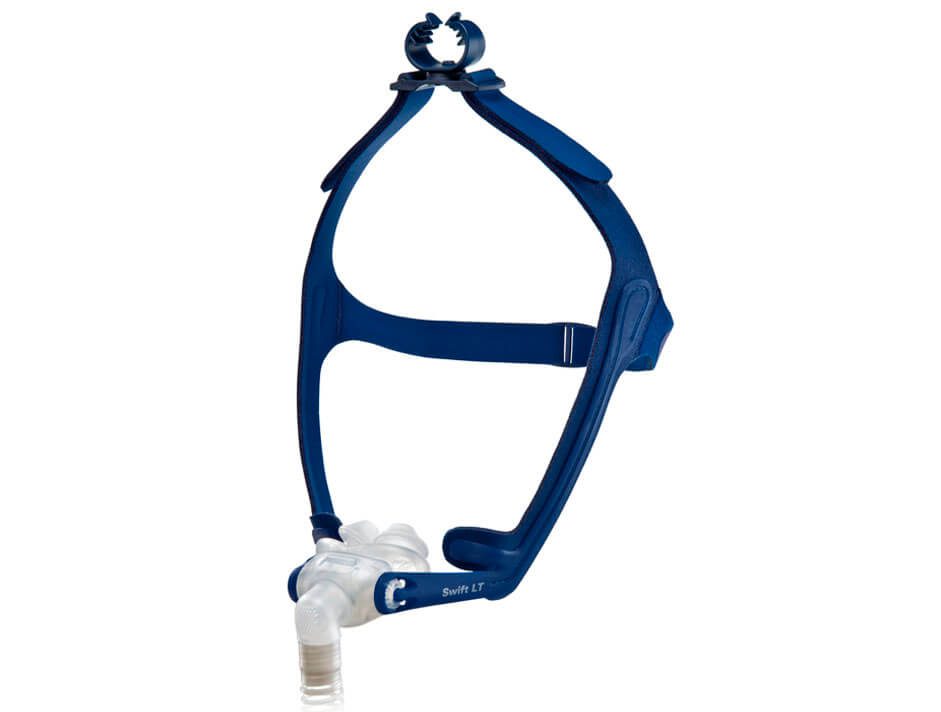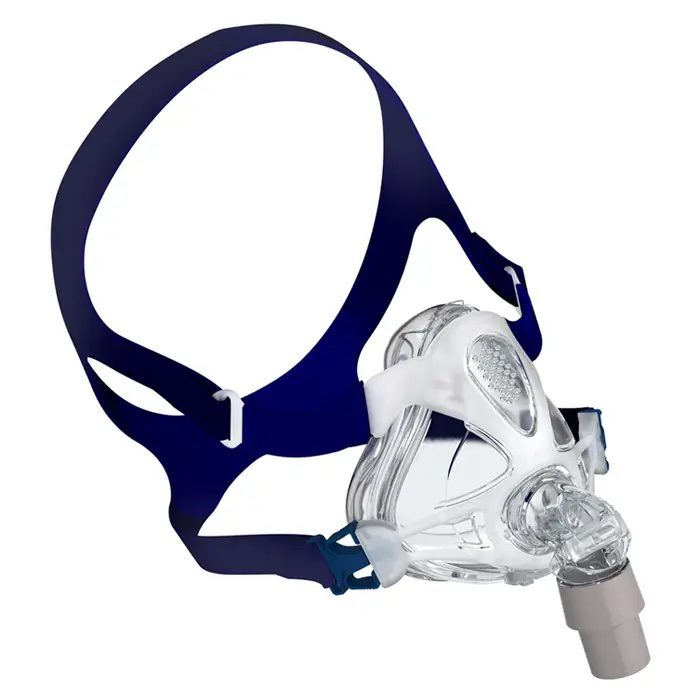Continuous positive airway pressure (CPAP) therapy, the leading treatment for obstructive sleep apnea (OSA), requires both a CPAP machine and accessories like a hose and mask.
Choosing the correct mask can make CPAP therapy significantly more comfortable and effective. We’ll walk you through the different types of CPAP masks, including their unique benefits and drawbacks, to help you understand which mask type might be best for your needs.
What Is a CPAP Mask?
CPAP users wear a mask that directs pressurized air from the CPAP hose into their airway. There are a wide variety of mask designs so that people can choose the mask that best fits their needs and facial structure.
Most CPAP masks are formed from three components: a frame that provides the mask’s structure, a pillow or cushion that presses against the user’s skin to create a seal, and headgear that allows the user to wear their mask. Different types of masks may include other parts, such as forehead support for a full-face mask.
As with other CPAP accessories, mask parts need to be replaced regularly. Each mask part has a different expected lifespan, meaning owners can replace most components separately rather than replacing the entire mask.
Popular Types of CPAP Masks You Can Choose From
There are three main types of CPAP masks: full-face, nasal, and nasal pillow masks. CPAP users should choose their mask type based on a number of factors, including comfort, their facial structure, and their prescribed air pressure level.
CPAP Mask Types
| Nasal Mask | Nasal Pillow Mask | Full-Face Mask |
|---|---|---|
| Nasal masks have a triangular or oval frame that fits over the nose, starting at the bridge of the nose and ending above the upper lip. | Nasal pillow masks sit below the nose and feature silicone pillows that are inserted just inside the nostrils to create an airtight seal. | Also known as oronasal masks, full-face masks cover both the nose and mouth. |
Benefits:
| Benefits:
| Benefits:
|
You Shouldn’t Use One If:
| You Shouldn’t Use One If:
| You Shouldn’t Use One If:
|
Other Types of Masks for Sleep Apnea
While the three main types of CPAP masks are the most common, there are other specialized styles that address specific needs.
- Hybrid CPAP masks: Hybrid CPAP masks combine the function of a full-face mask with the benefits of a nasal pillow mask. Instead of covering the entire nose and mouth, a hybrid CPAP mask starts below the nostrils and uses the sealing mechanism of a nasal pillow mask.
- Nasal prong CPAP masks: Nasal prong CPAP masks are similar to nasal pillow masks but are inserted deeper into the nostrils to create a seal against the walls of the nostrils rather than against the openings. This style may be a viable alternative for people who struggle to achieve a good seal with other mask types.
- Oral CPAP masks: Oral CPAP masks fit over the mouth and leave the nose entirely free, making them a practical choice for some people with nasal conditions that cause common CPAP mask styles to be painful or ineffective.
- Total face CPAP masks: Total face CPAP masks cover the entire face, including the eyes and forehead. Since the mask seals around the perimeter of the face, this mask type can be a good option for people whose facial features make standard mask types less effective.
What Are the Different Parts of a CPAP Mask?
While each CPAP mask style is designed differently, most masks have the same three parts — a frame, a cushion or nasal pillows, and headgear — plus a port that connects the mask to the CPAP hose.
- Mask headgear: Headgear holds the CPAP mask to the user’s face, usually with an adjustable or elastic band that wraps around the back of the head. More complex headgear can make for a better fit, but it may also be bulkier or less comfortable.
- Mask frame: A CPAP mask frame provides the mask with its structure and has multiple connection points to hold the other mask components together. Most mask frames are made from plastic or silicone and are flexible, sturdy, and easy to clean.
- Mask cushion: Mask cushions or pillows protect the face while creating a seal that prevents air leakage. Depending on the mask type and design, the cushion may be made from foam, silicone, or gel. Each cushion material varies in cost, expected lifespan, and overall feel.
- Mask hose: CPAP machines deliver pressurized air to the user’s mask via a hose. The connection point between the mask and the tubing varies among mask designs. Some feature connection points at the front of the mask that swivel freely, while others are designed for use with a hollow frame so that the hose can connect at the top of head.
How Often Should You Change the Parts of Your CPAP Mask?
Replacing CPAP mask parts according to the manufacturer’s recommended schedule helps ensure that CPAP therapy is effective and hygienic.
Regularly cleaning your CPAP mask helps keep it in good condition since dirt and skin oils can cause mask parts to break down faster than expected. However, wear and tear from ordinary usage will still degrade the components enough that they require periodic replacement.
Most CPAP mask manufacturers include a recommended replacement schedule in the mask’s user manual. The information may also be available on the manufacturer's website. When deciding on a new CPAP mask, you may want to look up the manufacturer’s recommended replacement timeline and compare it to the average lifespan for mask components.
| CPAP Mask Parts | Typical Replacement Timeline |
|---|---|
| CPAP Mask Frame | 3 to 6 months |
| Mask Headgear | 6 months |
| Mask Cushions | Varies by mask type |
| Hoses | 3 months |
What Are Some Good CPAP Mask Accessories?
While not everyone needs certain CPAP mask accessories, they can help make CPAP therapy more comfortable or effective. Some accessories can also allow people to use CPAP mask types that would otherwise not work well for them.
- Mask liners: CPAP mask liners are pieces of fabric that fit between the user’s face and their mask’s cushion. Some people may find that mask liners help prevent leaks, reduce irritation, or reduce moisture inside the mask. However, some people find mask liners uncomfortable or difficult to position.
- Chin straps: CPAP chin straps can allow people who breathe through their mouth to use a nasal or nasal pillow mask. While chin straps are available in many designs, most are adjustable and feature a comfortable chin rest. Chin straps work well for many people, but some find them uncomfortable or ineffective.
- CPAP pillows: These bed pillows have cutouts or irregular shapes to provide room for a CPAP mask. Most CPAP pillows are made from foam, and they come in various designs to support different mask types and sleeping positions.
Do You Need a Prescription for a CPAP Mask?
Like CPAP machines, CPAP masks can only be purchased with a prescription from a health care provider. Replacement mask components like headgear can be purchased without a prescription.
If you purchase your CPAP mask from an online CPAP specialist, they will require you to upload or fax them your prescription before you can make your purchase.
Buying a CPAP mask from a brick-and-mortar location works much like a pharmacy, as you can hand them a paper prescription or have your doctor send them the prescription in advance electronically.
Will Health Insurance, Medicaid, or Medicare Cover the Cost of Your CPAP Mask?
Many health insurance providers, including Medicaid and Medicare, cover the cost of necessary CPAP equipment such as masks. Coverage usually includes regular replacement of mask components, though the replacement schedule varies among providers and may vary from state to state for Medicaid recipients.
Reimbursement for CPAP supplies is often tied to compliance information recorded by your CPAP machine. If you’re unsure about your insurance provider’s CPAP coverage, it’s worth reviewing their literature or contacting them for further information.
Can You Use an FSA or HSA Account to Buy a CPAP Mask?
You can use a flexible spending account (FSA), health reimbursement arrangement (HRA), or health savings account (HSA) to buy a CPAP mask. If you pay out of pocket for your CPAP mask, your purchase is eligible for reimbursement through these types of plans.
Where Can You Buy a CPAP Mask?
Since you need a prescription to buy a complete CPAP mask, they are only available from doctors or sleep specialists, brick-and-mortar CPAP retailers, and online CPAP retailers. Replacement mask components can be purchased from more retailers, including some pharmacies and online retailers such as Amazon and Walmart.
- Sleep specialist: Some people purchase their CPAP mask through their sleep specialist to take advantage of the convenience and personalized advice. However, this option tends to have the smallest selection and highest prices.
- Brick-and-mortar CPAP retailer: Brick-and-mortar retailers usually offer a relatively large selection and advice from experienced staff. If you live near a CPAP retailer, going in person also means you can take your mask home that day.
- Online CPAP retailer: Online CPAP retailers often have the largest selection and lowest prices, in addition to offering perks like subscription services. However, customers must wait to receive their purchase and may have to pay shipping fees.
How Do You Clean a CPAP Mask?
CPAP users should clean their mask regularly in order to keep it hygienic and in good condition. Some manufacturers recommend cleaning your CPAP mask at least once a week, while others suggest daily cleaning. Individual masks usually have cleaning instructions included in their manual, but almost all masks can be cleaned in a similar way:
- Disconnect the CPAP mask from the hose and separate the components.
- Fill a basin or sink with warm potable water and a mild soap that does not include moisturizers, harsh detergents, or strong fragrances.
- Gently wash each mask component until it is free of dirt, oil, and skin care product residue.
- Rinse each component with warm water.
- Lay each component flat on a clean towel to dry, turning the components at least once to ensure they dry fully.
CPAP users should avoid placing their equipment, including their mask, in direct sunlight. Sunlight can damage mask components and cause them to degrade more quickly. Consult manufacturer guidelines for recommendations on cleaning your other CPAP machine accessories.
CPAP Masks
Since CPAP masks come in a variety of designs, the process of putting them on correctly can vary significantly. It’s important to follow the directions provided by the mask manufacturer, as wearing the mask incorrectly can lead to air leaks or skin irritation.
However, there are a few steps that apply to all masks:
- Try on a new mask for the first time during the day when you are awake and have natural light to see by.
- Follow the user manual or instructional video closely.
- Stand in front of a mirror to get a better view of how the mask sits on your face.
- Make sure the mask is secure but comfortable, as overtightening can cause pain or air leaks.
- Test the mask with your CPAP machine turned on, as this will alert you to any air leaks or other problems. Many machines have a “mask fit” mode in the user options, which will bypass the usual ramp time and give a better indicator of how the mask seals at full pressure.
Some people with longer hair find that gently pulling their hair back with an elastic band or braid keeps it from tangling with their CPAP headgear. Others prefer to cover their hair with a sleep cap, scarf, or thin hat.
If you choose to cover your hair at night, it’s advisable to use a covering made from breathable fabric. Natural fabrics like silk or cotton are more breathable than artificial materials and can help prevent you from becoming too hot at night.
Your preferred sleep position is an important factor to consider when choosing your CPAP mask. Some mask types may make it more difficult to sleep in certain positions, though CPAP pillows can make it easier to sleep naturally regardless of your chosen mask type.
- Back sleepers: Your doctor may advise you to avoid sleeping on your back since this position can worsen sleep apnea. However, back sleeping poses no problems when choosing a CPAP mask style.
- Side sleepers: Nasal pillow masks are the least obtrusive style for side sleepers who are able to tolerate their more direct airflow. Side sleepers who use a nasal or full-face CPAP mask may find that the side of the mask digs into their face. A CPAP pillow with appropriate cutouts can provide space for the mask and make sleep more comfortable.
- Stomach sleepers: Although some stomach sleepers can use a nasal or full-face mask if they also use a CPAP pillow, nasal pillow masks are generally the most comfortable option for this sleep position.
Sleeping on your side can be uncomfortable for some who use a full-face CPAP mask, though some people find relief using a CPAP pillow.
Side sleepers who use a full-face mask may prefer a pillow with large cutouts or a curved side, as smaller cutouts intended for nasal masks may not accommodate a full-face mask's larger profile.
Since nasal and nasal pillow CPAP masks do not cover the mouth, air can leak out if a person breathes through their mouth, potentially making therapy less effective and leading to dry mouth and more frequent awakenings.
People who naturally breathe through their mouth during sleep may find that a CPAP chin strap helps keep their mouth closed and allows them to use a nasal mask or nasal pillow mask.
Still have questions?
Sleep apnea products can be confusing. If you need individualized assistance, send us an email at [email protected] with your questions and we'll help find the best fit for you.



